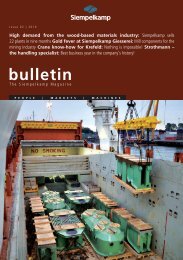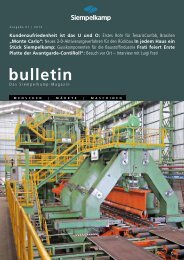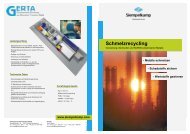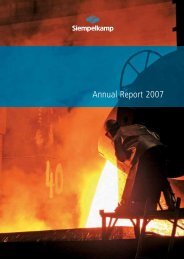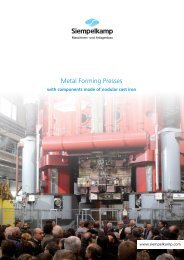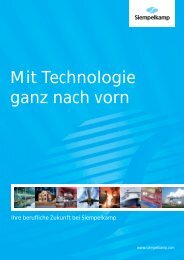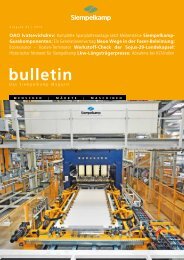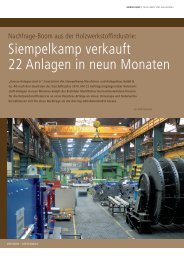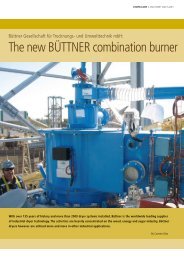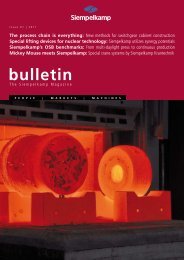Annual report 2009 - Siempelkamp
Annual report 2009 - Siempelkamp
Annual report 2009 - Siempelkamp
You also want an ePaper? Increase the reach of your titles
YUMPU automatically turns print PDFs into web optimized ePapers that Google loves.
The melting process starts with the melting of pig iron and steel scrap in a certain<br />
proportion along with additives. Adding magnesium to the molten mass results in the<br />
carbon to solidify as spherulite. Embedded into the ferritic matrix, this composition has<br />
many good properties:<br />
high tensile strength<br />
stable yield stress<br />
good elongation after fracture<br />
good deformability<br />
optimal damping features<br />
good fatigue strength<br />
Compared to steel, the castings made of this material have minimal shrinkage as they<br />
cool. Therefore, the familiar defects in steel castings caused by material shrinkage during<br />
the cooling process can be largely avoided. This is a tremendous advantage especially for<br />
component parts that are highly stressed in selective areas! Since the castings are near the<br />
fi nish shape when leaving the mold and typically exhibit a ferritic matrix, casting with<br />
nodular graphite cast iron saves time during mechanical machining and imposes minimal<br />
wear to tools. Furthermore, casting with nodular graphite cast iron opens up considerable<br />
advantages in regard to effi ciency for our customers. Since no heat treatment is necessary,<br />
we cut down on one entire production step and save energy. For castings with a weight of<br />
up to 300 t (331 US tons) this means considerable savings!<br />
Due to the fact that we have special know-how in the composition (metallurgy) of the<br />
molten metal, we have a high demand for parts with piece weights of over 150 t (165 US<br />
tons). The area of castings with wall thicknesses above 200 mm (7.9 in) requires special<br />
knowledge because of the involved slow cooling process. Once the product has solidifi ed<br />
and has been removed from the mold, the quality chain continues in the fettling shop.<br />
Sand build-ups and fl ashes are removed and our inspectors perform non-destructive<br />
testing by means of ultrasound to fi nd out whether defects inside the material exist.<br />
Metallographic testing examines cuts under a microscope and assesses the product<br />
quality via the microstructure. If desired by the customer, the next step is the machining of<br />
the casting. This step is carried out for approx. 30% of our projects. Finally, the castings<br />
are shipped to their destinations.<br />
<strong>Siempelkamp</strong> Casting technology<br />
Foundry<br />
Pouring ladle during deslagging<br />
Diesel engine block in fettling shop<br />
74 75




